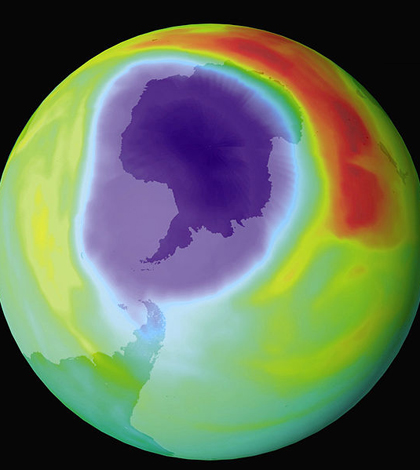Arctic ozone hole may impact ocean mixing

By analyzing historic data on outlawed aerosols, scientists from Johns Hopkins University determined that wind caused by a hole in the ozone over the Arctic affects ocean mixing, according to a Johns Hopkins.
The researchers looked at historical concentrations of chlorofluorocarbon-12 in south ocean sea water from the 1990s, when CFC-12 was phased out, up to through the 2000s.
Concentrations of CFC-12 increased in surface water as it increased in the atmosphere. Researchers then looked at when CFC-12 increased in deeper waters. They used the time span to determine intervals for ocean mixing of surface layers.
They found deep water nearer to the Earth’s South Pole is getting older and mixing less, while wind pushes subtropical sub-Antarctic waters to mix more, creating a rapidly refreshed layer of water at mid depth. Click here for the study.
Image: The hole in the ozone layer in 1998 (Credit: NASA)





0 comments